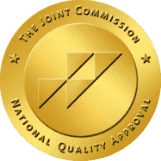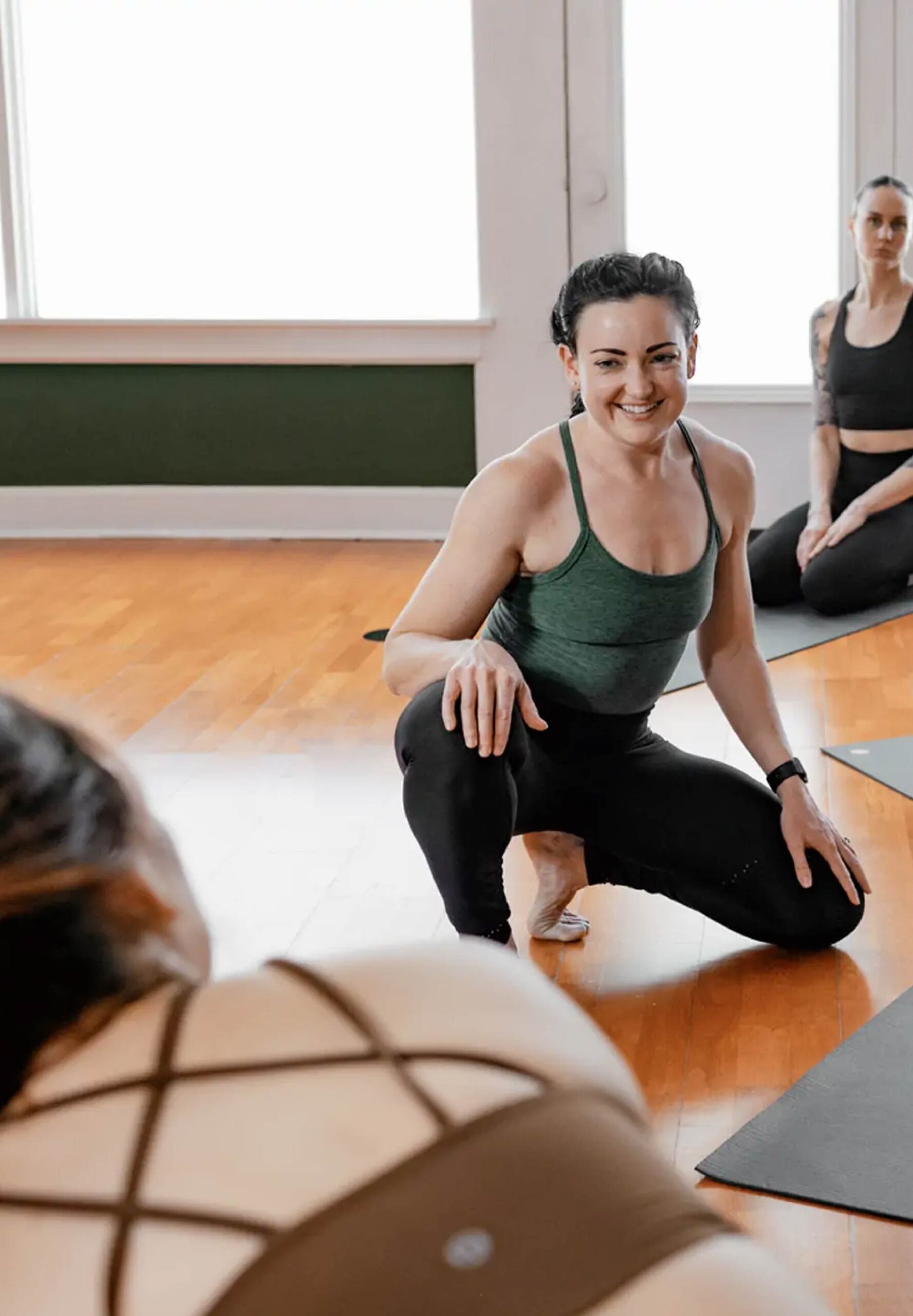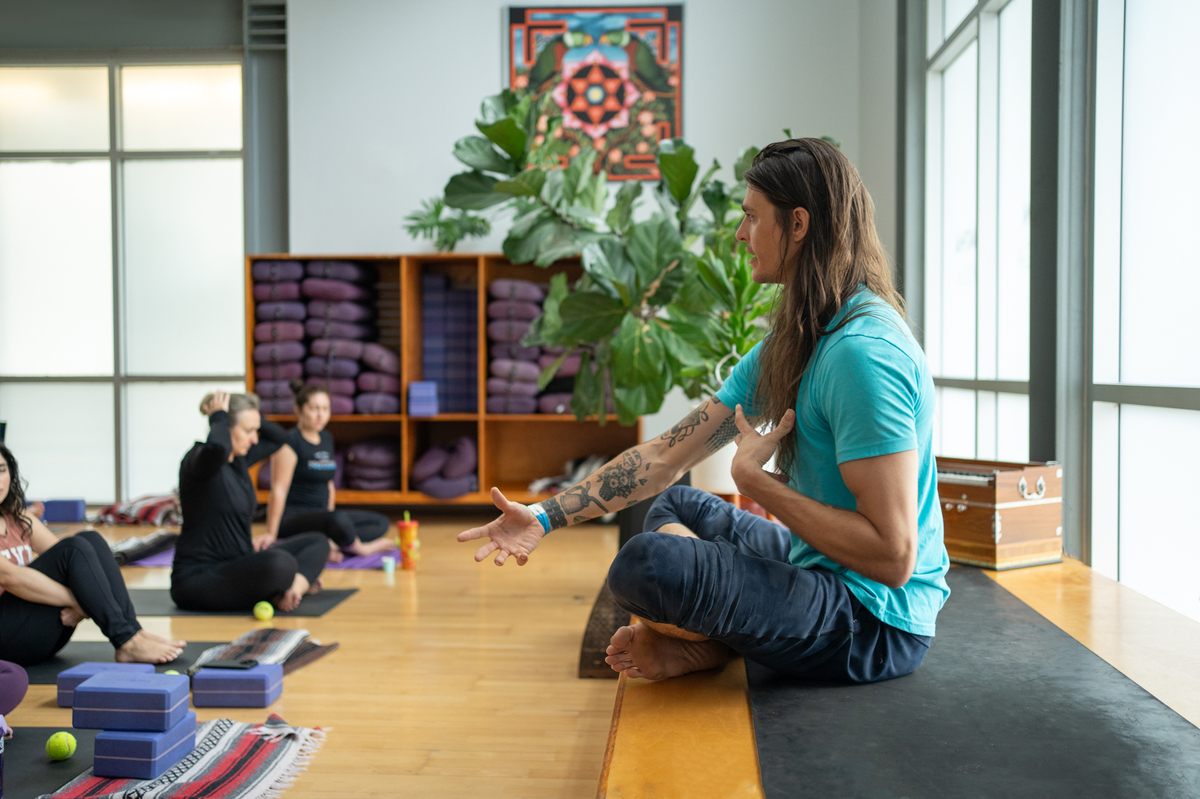What Is Addiction Recovery Yoga?
- Home
- What Is Addiction Recovery Yoga?
What Is Yoga?
History of Yoga
Yoga first began in India over 5,000 years ago. The earliest archeological evidence of yoga dates back to 3000 BCE. However, yoga started as an oral tradition, so it’s difficult to pinpoint exactly when it originated.
The earliest texts that mentioned this practice, the Vedas (1500 BCE) and the Upanishads (500 BCE), referred to yoga as a means to connect physical and spiritual forms. In 150 BCE, Patanjali’s Yoga Sutras described how to attain wisdom, personal power, and liberation through yoga. The sutras included breathing, eating, worship, mindfulness, and meditation techniques.
Yoga philosophy and practices continued to evolve, with the early 1800s setting the stage for physical yoga poses. Since then, yoga has taken on many forms and styles.
Specifics of Yoga
The Eight Limbs of Yoga, or Ashtanga, were described in the Yoga Sutras. The eight limbs represent yama (moral codes), niyama (self-discipline), asana (postures), pranayama (breath practices), pratyahara (sensory control), dharana (concentration), dhyana (meditation), and samadhi (liberation).1
Yoga operates on the assumption that everything is connected. Yoga builds compassion for the self, as well as for others. This compassion leads to a deepened connection to the worlds within and around us.
Healing Addiction With Yoga
Connection Between Mind and Body
A flexible and healthy body is key to a healthy mind. When our bodies are properly cared for, our minds benefit. Emotional wellness can help improve physical health and vice versa. This is an important aspect of addiction recovery yoga, as emotional and physical wellness are necessary for healing.
How Yoga Affects the Mood
Yoga can help boost mood and combat anxiety. This is because yoga helps us move out of “fight or flight” mode and into “rest and digest” mode. In this state, we can begin to heal and unwind. Yoga can also stimulate the pleasure centers in the brain and lead to feelings of bliss.2
Low GABA levels can cause anxiety and depression, two common side effects of addiction. Research has shown that yoga can reverse this effect. One study found that one hour of yoga can naturally increase GABA levels in the brain by 27%. Thus, addiction recovery yoga can improve mental health and well-being during addiction treatment.3
Can You Use Yoga and the Recovery 12 Steps?
The 12-Step program is rooted in the belief in a higher power and the connection between all living things. Addiction recovery yoga operates similarly, with the higher power being the universe and karmic law. Yoga’s foundational principles align with the 12 Steps and can be used with a traditional program.
These principles will be detailed below.
Ahimsa (Non-Violence)
Satya (Truthfulness)
Honesty is key in addiction recovery yoga. This principle asks us to live in our truth and keep our integrity. Through satya, we can define our authentic selves. This allows us to tap into our intuition and connect more with life.
Asteya (Non-Stealing)
This principle is about having faith in ourselves to create and get what we need on our own and acknowledging that we are enough. Note that non-stealing goes beyond material things. Stealing can present itself as “one-upping” or stealing someone’s moment.
We can also steal from ourselves and our futures. An example of this in addiction is the time lost while high or coming down. While getting high can lead to a quick bliss fix, it also steals future contentment.
Brahmacharya (Non-Excess)
Aparigraha (Non-Possessiveness)
Saucha (Purification)
Santosha (Contentment)
Tapas (Self-Discipline)
Svadhyaya (Self-Study)
Ishvara Pranidhana (Surrender)
Benefits of Yoga for Addiction Recovery
Relaxation
Self-Control
Natural Highs
It is common to feel “blissed out” after a yoga practice. As practicing addiction recovery yoga can release mood-boosting chemicals in the brain, such as GABA and endorphins, causing sensations of bliss and a natural high. The natural high from addiction recovery yoga can also be powerful in addressing cravings.5
Healthy Coping
Self-Discipline
Addiction recovery yoga teaches how to cultivate self-discipline. Control, non-possessiveness, and contentment are examples of essential principles taught through yoga that can be implemented in fostering self-discipline. Addiction recovery yoga helps us build resilience and create routines to prevent relapse.
Yoga Poses for Beginners
Yoga is a versatile and flexible practice. It can be done inside, outside, alone, in a group, at a studio, or at home. Further, there are a variety of poses, levels, and types to suit each individual’s capabilities and needs.
There are many beginner poses helpful in melting away stress and depression. Some poses for beginners in addiction recovery yoga include:
Mountain Pose
Start by standing at the edge of your mat with your hands by your sides and your feet hip-width apart. Ground down through your feet, spreading your toes for balance. Inhale deeply and lengthen your spine by engaging your belly. Open your palms so they are facing forward. Stand tall and breathe deeply for four to eight rounds of breath.
Standing Forward Fold
Child's Pose
Legs Up the Wall
Butterfly Pose
Learn More With Iris Healing®
At Iris Healing®, we take a holistic approach to addiction treatment. This means we focus on healing the whole person—body, mind, and spirit—not just the addiction. You can enjoy addiction recovery yoga, massage therapy, sound bath meditation, and more.
Butterfly Pose
We offer a variety of recovery programs, including detox, residential, outpatient, and aftercare. Depending on your specific needs, our team will create a personalized treatment plan to ensure you get the best opportunity for long-term recovery.
Why Choose Us?
Nestled in Woodland Hills, California, Iris Healing® provides comprehensive, holistic treatment that addresses the whole person. Our compassionate and spiritually-based approach helps individuals find meaning and develop a higher quality of life.
Treatment at Iris Healing® goes beyond the addiction by focusing on all aspects of the person. Our doctorate-level clinical team focuses on mental, physical, and spiritual well-being. We offer dual diagnosis treatment and evidence-based treatment methods, such as cognitive behavioral therapy (CBT), sensorimotor psychotherapy, neurofeedback, and equine-assisted therapy.
Contact Iris Healing® to Learn More
Our trained staff is available round the clock to support you on your journey and is committed to helping you live your best life. If you have questions about addiction recovery yoga, our programs, or how to start treatment with Iris Healing®, contact us at (844)-663-4747.
- https://www.researchgate.net/publication/316946652_Yoga_and_Mental_Health_A_Review
- https://www.ncbi.nlm.nih.gov/pmc/articles/PMC3193654/
- https://pubmed.ncbi.nlm.nih.gov/17532734/
- https://www.researchgate.net/publication/41164086_The_Health_Benefits_of_Yoga_and_Exercise_A_Review_of_Comparison_Studies
- https://www.sciencedirect.com/science/article/abs/pii/S0165032706002114
Related Content
Iris Healing® strives to be diligent and prompt in updating the information available on our website. Please note, however, that our treatment modalities and protocols are subject to change at any time. For the most up-to-date details regarding our treatment offerings or other protocols, please contact us: (844)663-4747





